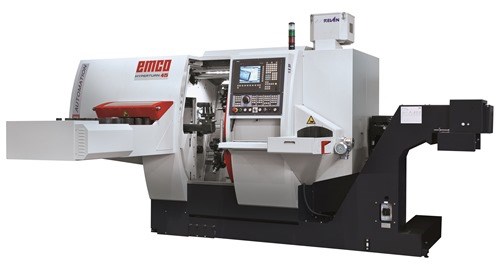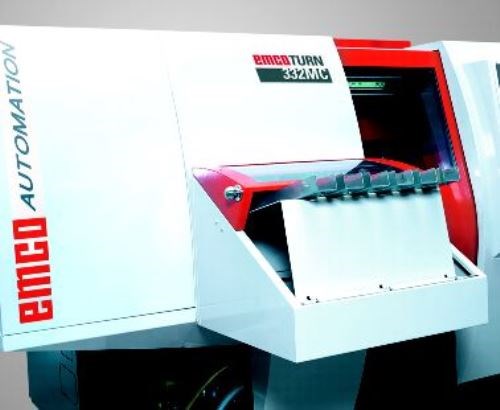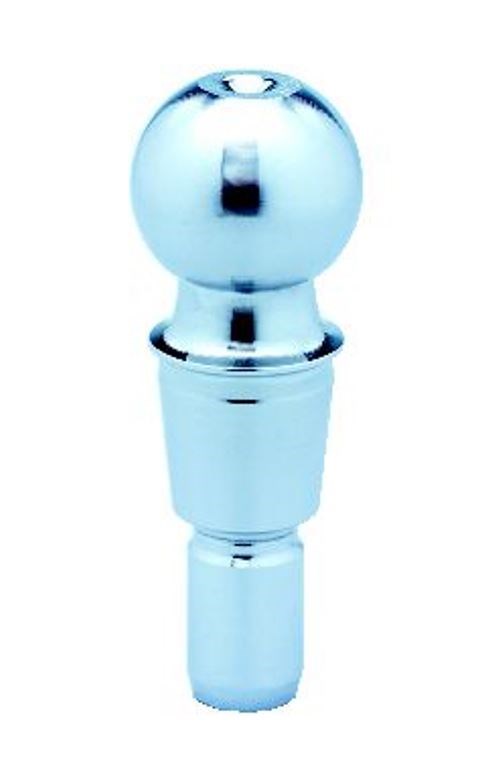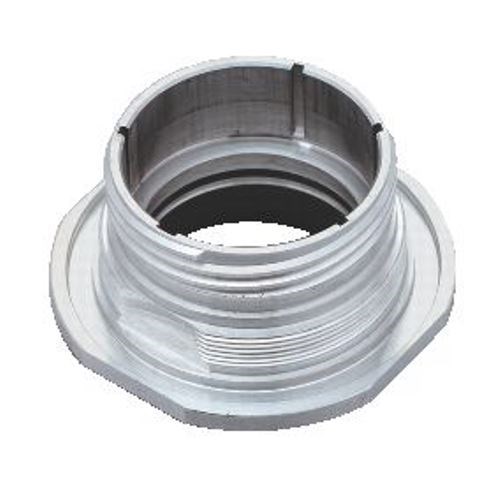Perhaps the most common way to automate a CNC lathe is with a bar feed. The lathe that is served by this device can machine piece after piece as the stock advances, converting a bar of material into a batch of finished parts. Since operator attention might not be needed until the next time a bar is loaded, lights-out machining is possible with this system.
However, there are costs to this type of automation. The bar feed is a precision machine tool in its own right, with both the price and the maintenance requirements that this implies. In addition, the bar feed imposes a cost in terms of floorspace. This machine might occupy a larger footprint than the lathe itself—a serious consideration for facilities in which space is at a premium. For these plants and shops in particular,
EMCO Maier sees its swing loader as an automation alternative.
The swing loader is an option for the company’s Hyperturn and Maxxturn CNC turning centers. This option essentially provides the machine with its own built-in automation. A compact part-loading arm resides and moves entirely inside the machine housing—comparable to the automatic toolchanger within a machining center, except with programmability, greater range of motion, and a selection of end-of-arm grippers. The option is most commonly used to load castings or forgings, but it also provides a way to load blanks from pre-cut bar stock.
In the simplest configuration of the swing-loader-equipped machine, parts wait within an inclined chute for the loader to grab them as needed. This chute can be partitioned into separate channels so that blanks of different diameters or material types can wait in parallel, allowing the unattended machine to switch between different part numbers in any programmed sequence. Alternately, workpieces can also be delivered to loader using a timed conveyor.
If the swing loader is used to load pre-cut blanks in place of using a barfeed, then of course a saw has to be factored into the cost of the system. A single saw is sufficient to support several turning centers using the swing loader option. In fact, producing blanks this way might actually make the machining process more efficient, because a simple operation—cutoff—gets shifted away from higher-value machines and onto a low-cost saw.
Related Content
-
Not just for large shops, automation can help even the smallest shops solve labor challenges and become more profitable and efficient.
-
With more and more automation options available for manufacturers, how do shops figure out what works best? Medical manufacturer rms Company has acquired robot arms, AGVs, pallet changers and software, and while it has found success with all, it has learned how some solutions meet its particular needs better than others.
-
CAM Assist cuts repetition from part programming — early users say it cuts tribal knowledge and could be a useful tool for training new programmers.




























